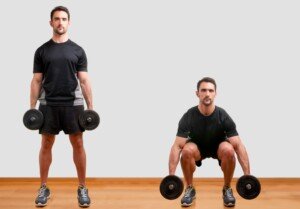
If you believe that walking everywhere (no car) means you don’t need to do structured cardio exercise, you’re very mistaken.
To produce a training effect on the heart, exercise must keep the heart elevated for at least 20 minutes, though at higher intensities, even 10 minutes will do.
The elevation need not be literally every second of those 20 minutes, such as in high intensity interval training.
If you walk everywhere, your heart rate isn’t necessarily elevated at all. Consider “walking everywhere” a form of transportation, not exercise.
Ask yourself if there’s a progressive component:
• Has the walking speed increased over time?
• Have inclines been added?
Walking at a transportational pace is just too easy to be considered valuable exercise to strengthen the heart and bones.
And no matter how much you walk every day, you still need to strength train too!
I once read in a forum a post from a person who criticized another’s suggestion that people give up driving to save money, improve environmental air, avoid accidents, etc. (no mention of the increased exercise).
Someone responded by stating that taking the bus everywhere was very impractical and time consuming. The first person then stated that buses run everywhere at all hours.
The other person said that a trip to the gym would take two hours via the public transportation system.
That’s when the first poster said, “If you walk everywhere, you won’t need to go to a gym.”

Does walking replace this? Shutterstock/ruigsantos

Does walking replace this? Shutterstock/Syda Productions
I couldn’t believe it. If you walk everywhere, think of what kind of walking this would consist of: casual paced movement.
If you walked to the post office, would you be up to tossing in some high intensity interval training?
It’s highly unlikely that at any point during ambulation, a person who “walks everywhere” would incorporate serious fitness striding into their casual forays.
Imagine walking to your job. Are you willing to work up a sweat and enter your office perspiring in your workplace clothes?
Or are you willing to pack away your high heels, stockings and power suit in a sack as you briskly stride to work, then change in the bathroom?
Or are you up to changing into exercise clothes after work, then busting out of the building and power walking all the way home, or even half-way and then strolling the remainder, while you suck in the exhaust fumes of rush-hour traffic?
What about all the calories burned?
If you walked everywhere and never used a motor vehicle, you’d burn a lot more calories than if you drove or rode a bus.
However, the fitness and cardiovascular component would be absent, because transportation-paced walking, even for miles, does not impose enough demand on the cardiovascular and musculoskeletal systems to produce a physically fit body.
In this case, the calories burned simply reflect mileage, not intensity.
Even if you made an effort to make as much of all the walking as briskly as possible, your body would eventually adapt very well to this.
And then what? How fit can you possibly get if all you do is briskly walk? It’s limited, unless there are hills involved.
If you “walk everywhere,” you still need structured cardio exercise — and of course, strength training!











